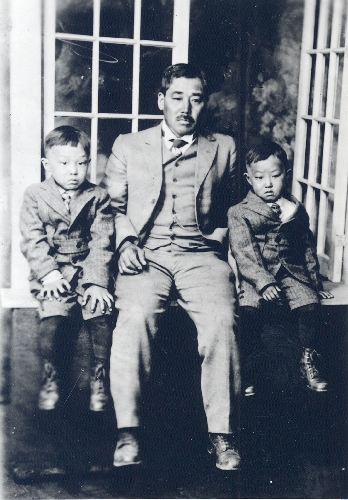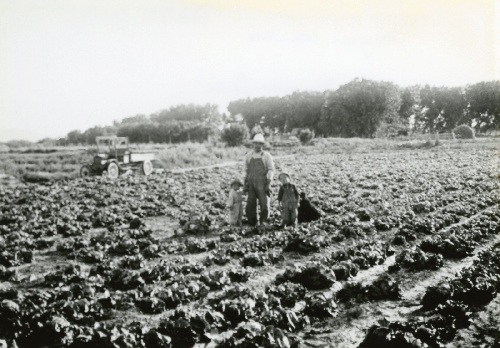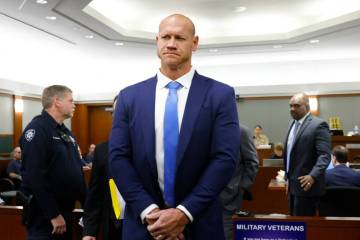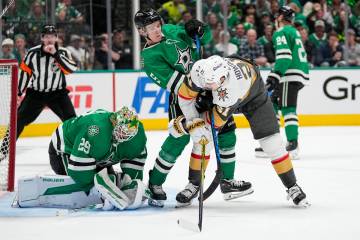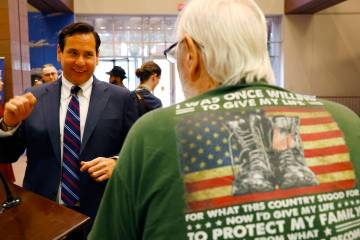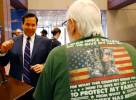School and road namesake among area’s early farmers
In the early days of the United States' involvement in World War II, when many Japanese Americans were being sent to internment camps, Clark County Sheriff Gene Ward brought the newly appointed local FBI agent down to meet Yonema "Bill" Tomiyasu, who had lived in the valley a quarter century by then.
"According to an oral history we have from Tomiyasu's son, the sheriff was pretty succinct," said Mark Hall-Patton, director of Clark County Museums. "He said, 'This is Bill, he's a good guy and he's not going to be any trouble.' And that was that."
Considering everything Tomiyasu had accomplished for the area by that point, the valley was lucky to have him. It seems likely that Ward's actions were motivated by a combination of friendship and a love of fresh produce.
Anyone who has tried to garden in Las Vegas is aware that it's a daunting task. Nearly a century ago Tomiyasu came to the area and figured out how to make crops grow in the desert.
He moved to North America from Japan at age 16 with the dream of affluence that was unattainable at the time in his native Kumamoto near Nagasaki. The son of a sugar cane farmer, he first came to British Columbia and then settled in central California, where he began his farming career as a fruit picker.
From there he moved on to gardening and plant nursery work and finally to a San Bernardino Elks Club, where he worked first as a groundskeeper and later as the head chef. An Elks member who was selling real estate in Las Vegas told Tomiyasu about the opportunities here. By 1914 he made the move, working on 40 acres of property on Winterwood Boulevard, near the site of what is now the Desert Rose Golf Course.
At the time, the city was still concentrated in a few blocks near the railroad station. Tomiyasu's farm was way out in the country. Before his arrival, a good deal of the produce sold in the valley was shipped from California, which at the time was not an inexpensive or efficient prospect.
Farming was still in its infancy here, and the planting guides Tomiyasu received when he bought seeds from California were all but useless. He set about experimenting with planting times and other agricultural variations. Within a few years, other farmers were consulting him for advice.
Tomiyasu shifted his operations to the Paradise Valley, working 120 acres of a 160-acre plot he purchased not far from the current site of Sunset Park. He and his family produced food for restaurants as far away as Beatty. When Boulder Dam was being built in Boulder City, they provided food for the workers.
While Las Vegas was far from ethnically diverse in its early years, the Paradise Valley was. Bill Tomiyasu's son Nanyu said the one-room schoolhouse in Paradise was the most integrated he ever attended, with five Japanese children, one black child and six white children.
"Actually, the schools weren't segregated here until after the war started," Hall-Patton said. "A lot of blacks and Southerners came to the valley then, and segregation came with them."
During the war, Tomiyasu continued his work, growing food that fed the soldiers at the gunnery school at Las Vegas Army Airfield, which became Nellis Air Force Base.
When better refrigeration methods and transportation made California produce a more attractive and cost-effective option, Tomiyasu transitioned into the nursery business, providing plants for the valley's rapidly expanding suburbs.
In the book "The First 100: Portraits of the Men and Women Who Shaped Las Vegas," Nanyu is cited as joking that "Allergy sufferers can thank his father for the abundance of fruitless mulberry trees that dot the Las Vegas landscape -- and dust it every spring with their pollen."
In his early '60s Tomiyasu became embroiled in legal problems when a loan he had taken to expand his nursery business defaulted. The family claimed that someone had fraudulently obscured the repayment terms, and the case went to the Nevada Supreme Court. Tomiyasu ended up losing what was then a 100-acre ranch, despite the work of attorney Harry Claiborne.
The property was subdivided, becoming several high-end ranches and mansions. Robert Goulet, Suge Knight, Michael Jackson and Prince Jeffrey of Brunei have all owned homes on the former Tomiyasu Ranch. Phil Ruffin, owner of Treasure Island, recently purchased a home there.
The tenacious Tomiyasu simply shifted the nursery operation to a new location and went back to work. He died in 1969. Nanyu carried on the business for another three decades.
Much of Tomiyasu Lane marks the western border of the old ranch. Tomiyasu Elementary School at 5445 Annie Oakley Drive is named for the pioneering agriculturalist.
Nanyu Tomiyasu died in 2002. Bill Tomiyasu's grandchildren, Bill and Bob, still live in town and are in the real estate business. They have never sold a property on the street that bears their grandfather's name.
"It's a pretty short street," offered Bob Tomiyasu by way of explanation.
Contact Sunrise/Whitney View reporter F. Andrew Taylor at ataylor@viewnews.com or 380-4532.
Naming Las Vegas The history behind the naming of various streets, parks, schools, public facilities and other landmarks in the Las Vegas Valley will continue to be explored in a series of feature stories appearing in View editions published on the first Tuesday of every month. If you're curious about how or why something got its name, post a comment on our Facebook page, www.facebook.com/viewnewspapers, or email sblust@viewnews.com. Thanks for reading View.



